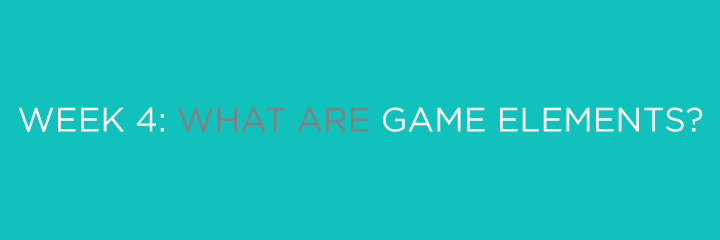The magical world of Game Elements
- annemiekefrank

- May 8, 2016
- 3 min read
What makes a game a game and a gamified product gamified? Simply put, the whole is greater than the sum and without the pieces, you have no whole. In this case the pieces are called game elements. You can picture game elements as a toolbox, as regular patterns we extract from games to use for business purposes, or whatever we want to gamify.

As a game designer you basically control the game by trying to produce an experience for your audience, by trying to understand how to use the different elements to produce an optimal experience that suits your player’s and product’s needs, wants and desires.
There are three types of game elements:
(1) Dynamics: This is a hidden structure which makes a game coherent and brings continuity to your gamified system. This can be anything from following a narrative/a storyline, giving your audience a sense of flow, to adding the element of progression and letting players feel they are improving.
(2) Mechanics: These are elements that make the game move forward, that evoke an action, which leads to a new action – a loop of actions. Mechanics come in the form of challenges, competition & cooperation, feedback, collecting resources, rewards, transactions, turns...
(3) Components: These are specific ways of doing/implementing Dynamics and Mechanics. For example, collecting achievements, creating an avatar, receiving badges, unlocking content, leaderboards, collection points, leveling up, going on quests, buying and selling virtual resources...
Here is very very very simple example: I am a game designer and I create a children’s education game. The star of the game is Blurp who wants to travel the world and learn about all the cultures made up of my gamified world. By visiting new countries, I the player unlock new destinations (Dynamics: Storyline & sense of progression). Along the way I can play with other players and I receive buddy rewards (Mechanics: Challenges, cooperation & rewards). Whenever I visit a new country and I learn something, I receive badges, points and I grow smarter and level up (Components).
Obviously it’s not about using all elements and for each gamified system you need to evaluate which components make most sense.
Some game elements are more common then others and a lot of gamified systems make use of: points, badges and leaderboards.
(1) Points: They keep your score, therefore determining how successful you are, they can stand for winning, can unlock further content, they are a feedback mechanism, can indicate progress... Basically they can more or less represent anything, therefore giving your game a system. Ergo, thats why a lot of gamified systems make use of them.
(2) Badges: Are a representation of achievement, a visual indicator, as they are pretty flexible they can stand for anything and a game designer can pretty much decide how they want to motivate a player to do something. They are also a great visual indicator, do I want to create a more serious system, or a cute colorful platform of pink bunnies?
(3) Leaderboards: Is a basic ranking system, telling users where they stand, compared to other users, they give players feedback in representation to other players. There is one danger when looking at leaderboards, that they can also demotivate a player, for example if you are ranked 143.757 out of 145.000 you might lose interest in the game, cause “winning” just seems so far away.
A few things to keep in mind:
Game elements are starting points and it’s important not to just simply slap game elements on top of a product.
Elements are not the game itself (again... the whole is greater...)
It is important to tie all elements together – emotions, narrative, points, challenges etc. Create a sense of flow using all tools at hand.
Don’t overemphasize on giving out rewards. People get used to getting rewards and they can actually get boring, or even demotivate. A fascinating topic into the complexity of the human mind. More on this next post.




















Comments